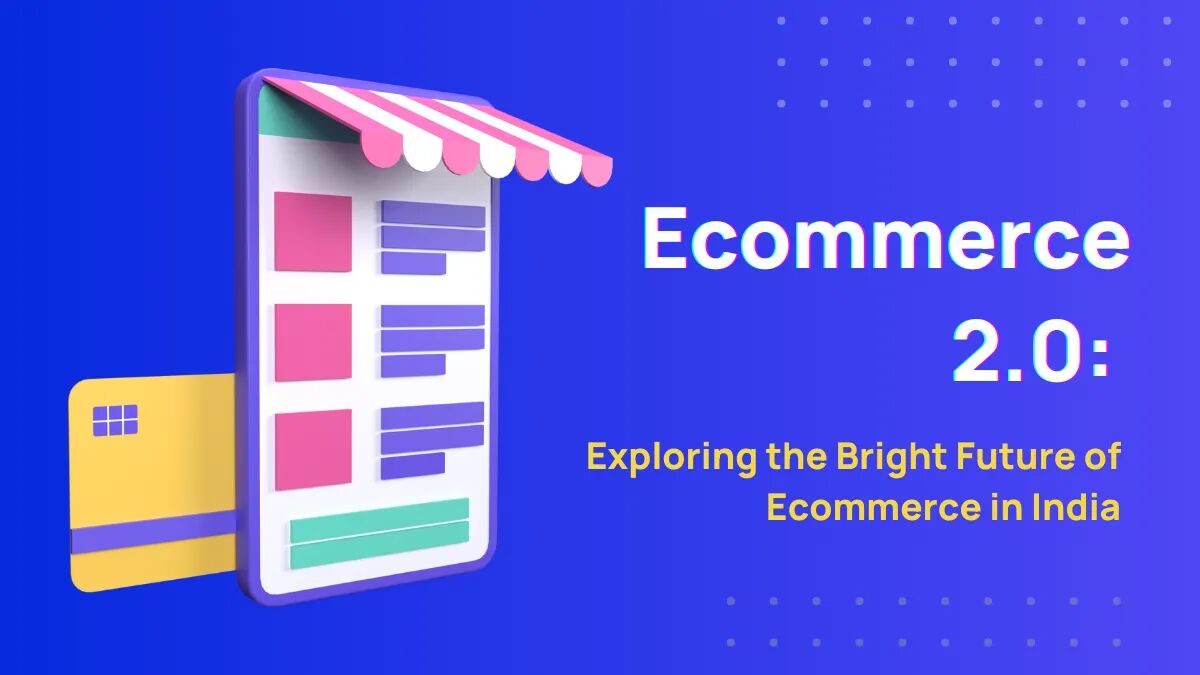The rapid growth of ecommerce has revolutionized the way businesses operate and consumers shop. India, with its vast population and increasing internet penetration, presents an enormous opportunity for the ecommerce industry.
Table of Contents
In this article, we will explore the future of ecommerce in India, discussing the key trends, challenges, and opportunities that lie ahead.
The Current State of E-commerce in India
India has witnessed remarkable growth in e-commerce over the past decade. With the rise of affordable smartphones and accessible internet connectivity, millions of Indians now have the ability to shop online. According to recent reports, India’s ecommerce market is expected to reach a value of $200 billion by 2027, fueled by factors such as increasing disposable incomes, changing consumer preferences, and the government’s digital initiatives.
Key Trends – Future Of Ecommerce In India
1. Mobile Commerce (m-commerce)

The future of ecommerce in India is undoubtedly mobile. With a significant portion of the population accessing the internet primarily through smartphones, mobile commerce is expected to dominate the landscape. Ecommerce companies invest heavily in mobile app development and optimization to provide seamless shopping experiences tailored to smaller screens.
As technology advances and 5G networks become more widespread, m-commerce will continue to grow, enabling even more Indians to shop conveniently from their mobile devices.
2. Rural Ecommerce
While urban areas have been at the forefront of the ecommerce revolution in India, the future lies in tapping into the enormous potential of rural markets. Rural consumers, often underserved by traditional retail infrastructure, are increasingly turning to online platforms for their shopping needs.
Ecommerce companies are expanding their reach by setting up delivery networks, offering vernacular language support, and tailoring their product offerings to cater to rural tastes and preferences. This focus on rural ecommerce is expected to drive significant growth in the coming years.
3. Social Commerce

Social media platforms are becoming key players in the ecommerce ecosystem. With their massive user bases and integrated shopping features, platforms like Facebook, Instagram, and WhatsApp are enabling businesses to reach customers directly and facilitate seamless transactions.
The future of ecommerce in India will see a greater convergence of social media and online shopping, blurring the lines between social interactions and commercial transactions. Influencer marketing and user-generated content will play a crucial role in driving sales and building trust among consumers.
4. Omnichannel Integration

To provide a seamless shopping experience, ecommerce companies are increasingly adopting an omnichannel approach. This involves integrating offline and online channels to create a unified customer experience. The future will witness a convergence of physical stores, online marketplaces, and mobile apps, enabling customers to browse, order, and receive products through various channels.
The integration of technologies such as augmented reality (AR) and virtual reality (VR) will further enhance the shopping experience, allowing customers to virtually try products before making a purchase.
Challenges and Opportunities For Ecommerce In India
While the future of ecommerce in India appears promising, it is not without its challenges. Some of the key obstacles that need to be addressed include:
Logistics Infrastructure
Ensuring efficient and reliable last-mile delivery remains challenging, especially in remote areas. Investments in logistics infrastructure and innovative delivery solutions are necessary to overcome this hurdle.
Internet Connectivity
Despite significant progress, internet connectivity still lags in some areas of India. Bridging the digital divide and ensuring widespread access to high-speed internet will be crucial for the growth of ecommerce.
Trust and Security
Building trust among consumers and ensuring the security of online transactions are paramount. Ecommerce companies need to invest in robust cybersecurity measures and educate customers about safe online shopping practices.
Despite these challenges, the future of ecommerce in India presents immense opportunities:
Untapped Markets
The majority of India’s population is yet to embrace online shopping fully. With increasing awareness and improved accessibility, ecommerce companies have the potential to tap into new customer segments and expand their market reach.
Personalization
The vast amount of data generated through online transactions provides valuable insights into consumer preferences. By leveraging this data, ecommerce companies can offer personalized recommendations, promotions, and tailored shopping experiences, fostering customer loyalty.
Small and Medium Enterprises (SMEs)
Ecommerce platforms provide a level playing field for small and medium-sized businesses, enabling them to reach a nationwide customer base without the need for extensive physical infrastructure. The future will see more SMEs leveraging ecommerce to grow their businesses and contribute to India’s economic development.
Conclusion
The future of ecommerce in India is incredibly promising. As more Indians come online and embrace digital transactions, the ecommerce industry is poised for exponential growth. Mobile commerce, rural expansion, social commerce, and omnichannel integration will be key drivers of this growth.
However, challenges related to logistics, internet connectivity, trust, and security must be addressed. By capitalizing on the untapped markets, personalization, and empowering SMEs, the ecommerce industry has the potential to transform India’s retail landscape and drive economic progress.
